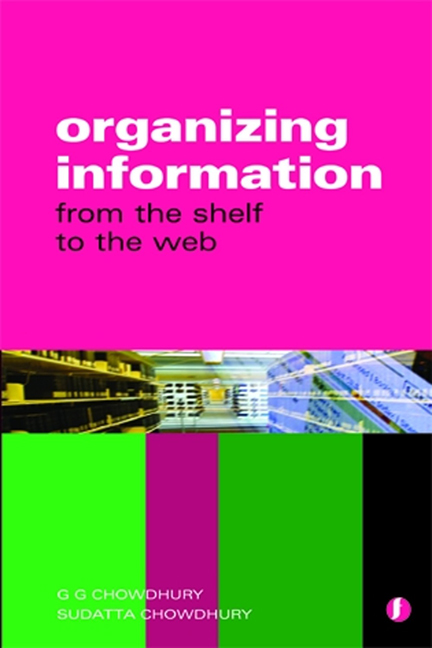Book contents
- Frontmatter
- Dedication
- Contents
- Preface
- Glossary
- 1 Organizing information: what it means
- 2 Information organization in non-library environments
- 3 Cataloguing
- 4 Bibliographic formats: MARC 21 and others
- 5 Library classification
- 6 Subject heading lists and thesauri in information organization
- 7 Organization of internet information resources
- 8 Metadata
- 9 Markup languages
- 10 Ontology
- 11 Information architecture
- 12 The semantic web
- 13 Information organization: issues and trends
- Index
10 - Ontology
Published online by Cambridge University Press: 10 September 2022
- Frontmatter
- Dedication
- Contents
- Preface
- Glossary
- 1 Organizing information: what it means
- 2 Information organization in non-library environments
- 3 Cataloguing
- 4 Bibliographic formats: MARC 21 and others
- 5 Library classification
- 6 Subject heading lists and thesauri in information organization
- 7 Organization of internet information resources
- 8 Metadata
- 9 Markup languages
- 10 Ontology
- 11 Information architecture
- 12 The semantic web
- 13 Information organization: issues and trends
- Index
Summary
Introduction
Semantics – or, simply speaking, meaning – has always played an important part in information organization, processing, access and management. In the library world, tools have been designed that represent the semantic relationships among disciplines and their constituent concepts: classification schemes, subject heading lists, thesauri, etc. are all tools that in some way represent the semantic relationships among concepts, and information resources are mapped against such tools in order to process their semantic content to facilitate better organization and access. Although such tools have been successfully used for a long time, they have some inherent limitations that make them unsuitable for use in the web environment, especially as far as semantic information processing and management is concerned. Ontologies have been developed for this purpose; they are sophisticated information processing tools that allow computers to process information resources based on the meaning of their constituent parts. This chapter provides a general overview of ontologies from non-technical perspectives; many important references appear at the end that will lead readers to further information about different types of ontologies and their underlying technologies. The chapter begins with a definition of the origin and meaning of the term ontology, followed by a brief discussion of how it differs from other similar tools like taxonomy and thesauri. It then provides some common examples of ontology, and discusses the role played by an ontology in the organization and processing of electronic information. It also describes how to build an ontology, and discusses the characteristics of some ontology languages like OWL (Web Ontology Language). Several excellent resources on ontologies, and on ontology-building languages and techniques, are available, such as those on the W3C website referred to in the references.
Ontology: origin and meaning
The term ‘ontology’ originates from philosophy, where it is used to denote the branch of metaphysics that is concerned with, simply speaking, the kinds of things that exist and how to describe them. The origin of the term ‘ontology’ can be traced back to 1721, as an abstract philosophical notion (McGuinness, 2003). Over the past few years, the term has gained a new meaning and is used in several fields of study, including knowledge engineering, knowledge management, information retrieval and, more recently, the world wide web. Its generally accepted meaning in these fields is the specification of a conceptualization, as defined by Gruber (1993).
- Type
- Chapter
- Information
- Organizing InformationFrom the Shelf to the Web, pp. 171 - 186Publisher: FacetPrint publication year: 2013



